
Smartphones, instant internet access, many megapixel cameras, selfie sticks ... It is impossible to deny that all these elements are part of many people's lives, mobile photography is a phenomenon that is growing non-stop..
The problem comes when we want to store all those memories that we have been concerned with capturing with the smartphone's camera and there is no free space in the phone's memory. The solution is to use online storage services , but not just any one: there are already services that offer unlimited storage capacity. We are going to know the best and some tricks.
Google Photos, store photos in the cloud "without limits" for free
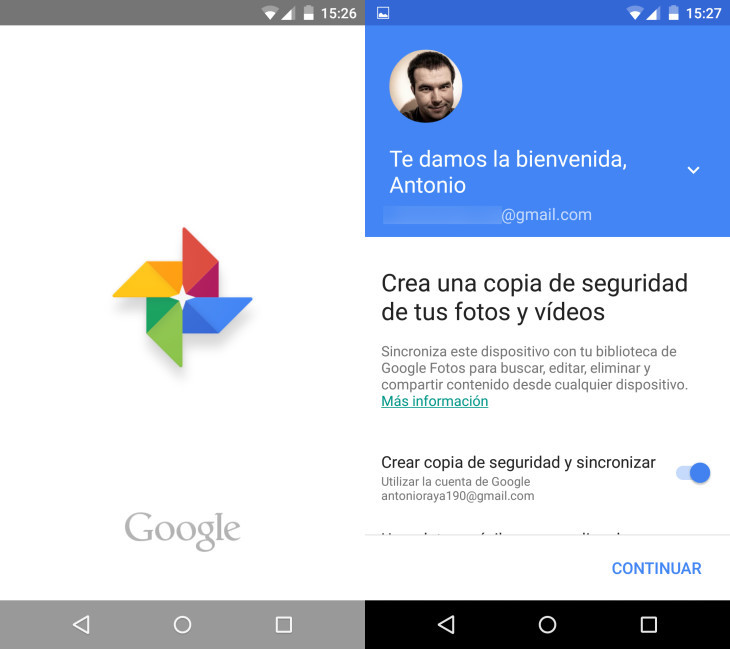
Who does not know Google? It has multiple services used daily by millions of people: the search engine, Gmail, YouTube, Google Maps, etc. But one of its most recent services is Google Photos , the evolution of the photo gallery that included the default Android system in previous versions.
Google Photos incorporates many editing tools , in addition to serving as a gallery, but its greatest asset is the ability to store photographs in the cloud on Google's own servers..
A few months ago Google announced that Google Photos will be able to store all our photos in an unlimited way thanks to the application of smartphones and the use of a special function.
Trick: store your photos unlimitedly in Google Photos
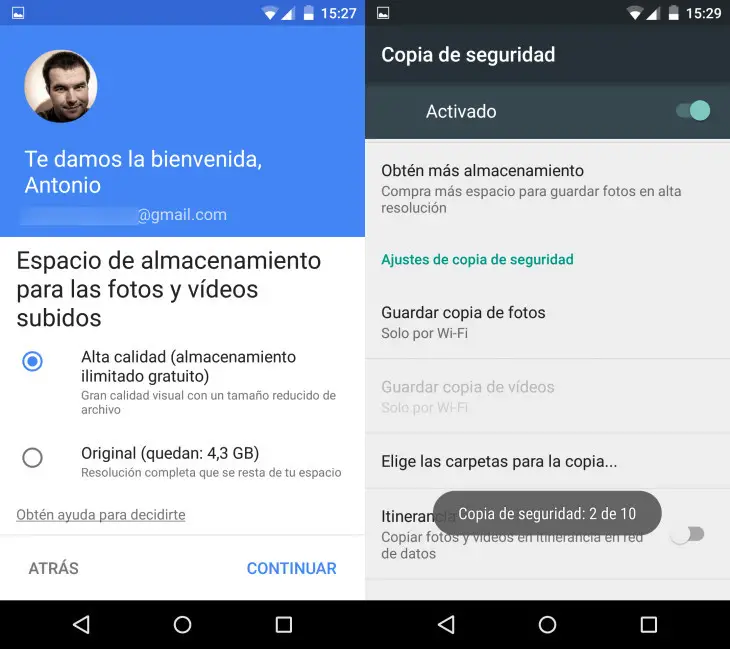
Google provides each account, in its free plan, 15 GB of available space to store all kinds of content: Gmail emails, files and documents from Google Drive and also all photos from Google Photos..
The new way of Google Photos to store photos in an unlimited way (although the free space is limited) is to select " High quality " in the options that it offers us when activating the automatic storage function in the cloud.
It has a trick: the photos will be stored with high quality, but not with all the original quality of the file, that is, they will be compressed using Google's own algorithm that guarantees practically the same image quality in a much smaller space.
We can always choose to upload our photos with the Original quality , but then we will use the 15 GB limit that our Google account has. In summary, we will have unlimited space, but following that only option of quality.
Free QuickPic, TB to store all your photos in the cloud
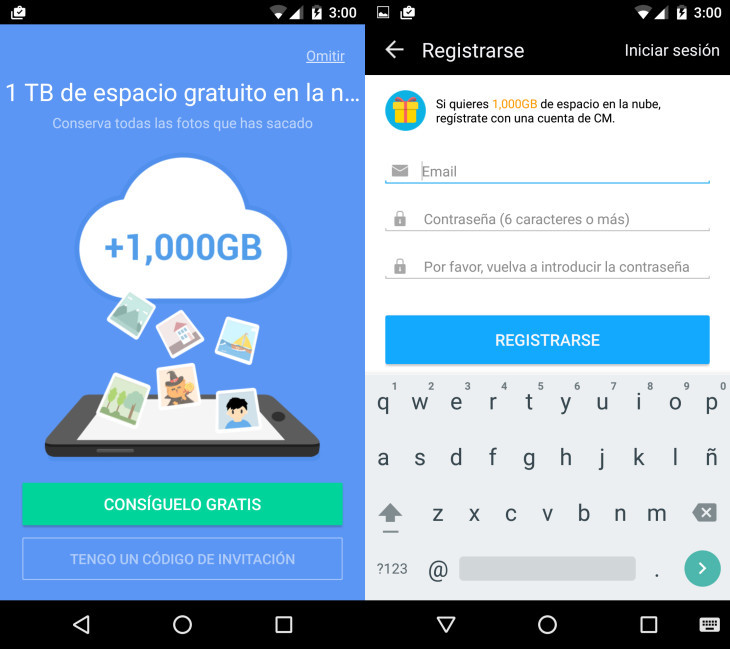
We jump to the next most interesting option to store photographs in the cloud in an “unlimited†way, although in this case there is a limit. The fact is that this limit is so huge that you can practically speak of a service with unlimited capacity.
QuickPic is a photo gallery that was established as the perfect alternative to the old Android photo gallery when it became Google Photos and began to add more cumbersome functions for users who were already used to another way of searching for their photos in the smartphone.
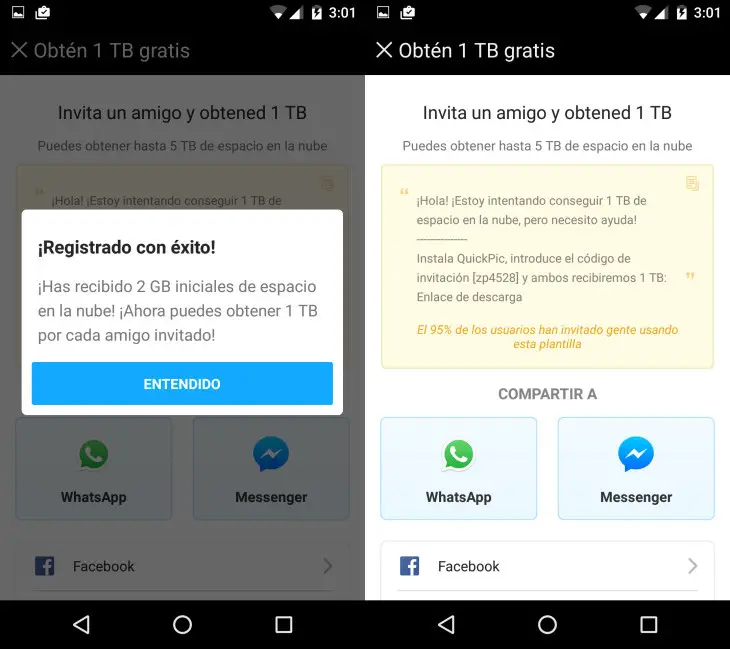
QuickPic helps us to clearly and cleanly review and share our photos stored on the device. It is as simple as it is intuitive and practical, and it is highly successful today. Precisely for this reason, the creators have been encouraged to add one more reason for their users to be loyal.
Tip: earn up to 5TB of free online storage on QuickPic
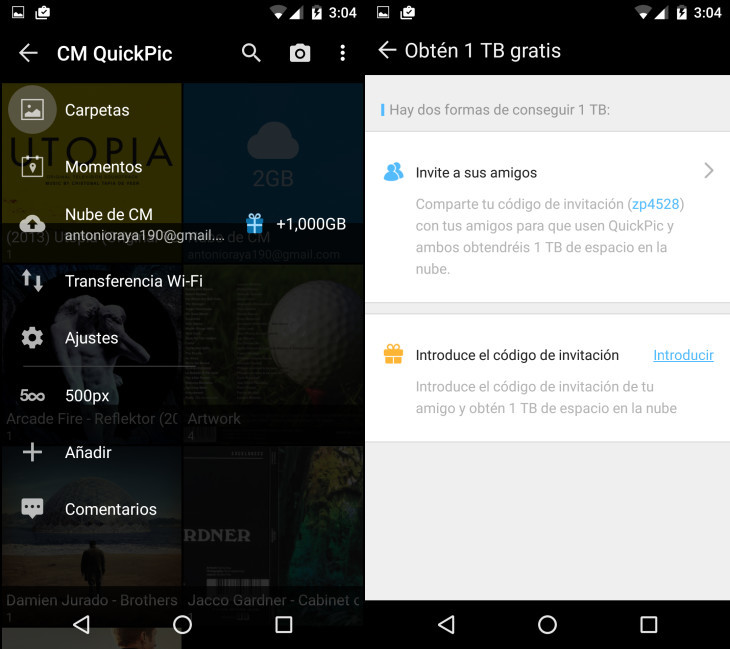
Just by registering on their platform, for free, you can access 2 GB of space to host your images, but the surprise comes if you decide to collaborate with other friends with the codes that the platform will provide when registering.
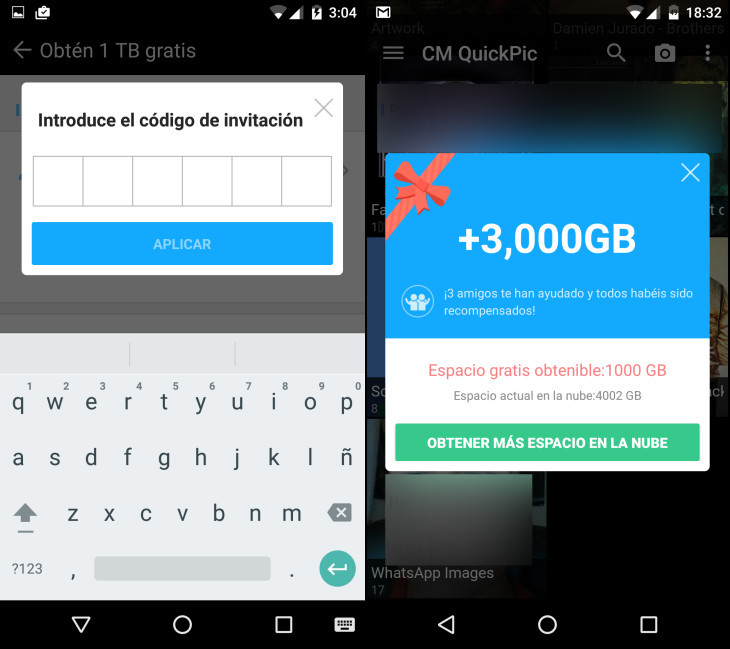
If you insert a friend's code, QuickPic will automatically add 1 TB of additional free space in your account, and if your friends add your code, you can get up to 5 TB in total. It is not an unlimited space, as Google Photos promises, but 5 TB, currently, it seems an impossible capacity to exhaust and even less with photographs from our smartphone.
Other “almost unlimited†alternatives

There are many popular platforms on which to host our photographs in the cloud, although unfortunately practically none is unlimited , and even less free such as Google Photos.
The best known currently are Dropbox, Google's own drive, box, Microsoft's OneDrive and some as interesting as hubic, all with applications for smartphones. All these platforms have free hosting plans, yes, with some limitations.

As we can see, none offers more than 25 GB of accommodation for free, although, curiously, some of them started in this field providing crazy space capabilities years ago, as was the case with box, which offered 50 GB for free, or OneDrive (formerly SkyDrive) that offered 25 GB.
The thing changes if we consider acquiring a payment plan on these same platforms. There are different types in each of them, but we are going to focus on the most affordable and closest plans to the idea of "unlimited accommodation".

All the plans that we show you are around 10 euros a month , except for the hubic plan, which costs 5 euros a month. Another constant is that of capacity: practically all offer 1 TB of accommodation, except a box that offers unlimited space and a hub that bets on 10 TB.
By making these monthly contributions, the contracting users have exclusive advantages on each platform: in Dropbox they will have greater control over the files, in Google the space can be shared with all their services, in the box it will be necessary to have 3 users, in OneDrive it is included Access to Office 365 and 5 TB are distributed for 5 users and in hubic we continue to enjoy the absence of any limitations.
Images | wp | Google